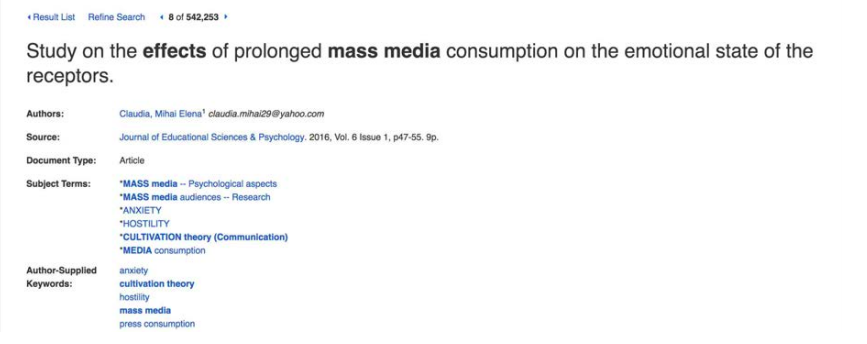This chapter of your workbook is all about walking you through the process of researching and writing a literature review. Use these exercises as guides while you write your paper. Good luck!
Choosing a Topic
Choosing a topic for a research paper is research. In order to write a thorough, comprehensive literature review, you must ensure that your topic isn't too broad or too narrow. Start with something that interests you and conduct a quick library search. From there, narrow your topic down (or broaden it) by continuing to find scholarly sources that pertain to your topic.
Topic Ideas:
List 3 Potential Topics
Finding Sources
Once you have chosen a topic, you will need to begin a more in-depth search for sources. Make sure you are looking for peer-reviewed, scholarly journal articles or peer-reviewed, scholarly books. Identifying key terms for your digital library searches will be essential to finding exemplary sources for your literature review. By conducting preliminary research in the process of narrowing down your topic, you probably already have two or three good sources. What keywords or subject terms (see figure 3) are listed in the source descriptions located in the database you are using? These will come in handy as you begin a more deliberate, strategic search for sources.

Figure \(\PageIndex{1}\): Subject Terms and Keywords
Key Terms:
List 10 to 12 Key Terms Related to Your Topic
Bibliography Mining:
Take a look at the references sections of the sources you have already found. Find 3 to 5 potential sources for your paper and list them below.
Writing the Introduction
The introduction should give the reader a brief overview of what the purpose of the paper is and why the topic is important. Introduce your topic and give any background information that may be necessary. This is the section in which you will define key concepts or share statistics illustrating the significance of your topic.
Introduction:
Fill in information below that you might need for your introduction.
Background Information:
Statistics/Data to Show Importance of Topic:
Key Concepts to Define:
Purpose of Paper:
Writing the Literature Review Section
This is the main section of your paper and will require the most preparation. Remember, you are summarizing and synthesizing information from your sources. The exercises below are intended to help you stay organized as you compile sources for this section.
Annotated Bibliography:
Cite each of your sources in APA format and write a 5 to 7 sentence summary underneath each citation. Focus on the purpose and main findings/conclusions of each study.
Source 1
Citation:
Summary:
Source 2
Citation:
Summary:
Source 3
Citation:
Summary:
Source 4
Citation:
Summary:
Source 5
Citation:
Summary:
Source 6
Citation:
Summary:
Source 7
Citation:
Summary:
Source 8
Citation:
Summary:
Writing the Analysis/Discussion Section
This section is where you tie everything together and discuss the overall patterns and findings from the research studies you just reviewed in the previous section. You will also make suggestions for future research in this section.
Analysis and Discussion:
Answer these questions as you brainstorm for this section.
What overall conclusions can you make about your topic based on the research you just summarized?
What points do the authors agree on?
Were there any contradictions between authors' conclusions/findings?
What questions still need to be addressed (knowledge gaps), and what should future research studies address to better understand your topic?
Writing the Conclusion
The conclusion section typically restates the purpose of the paper, the importance of the topic, and overall assumptions you can make about your topic based on the reviewed research. Try to be concise with this section.
The Conclusion:
Write a rough draft of your conclusion below.
Writing the Abstract
The abstract comes before the body of the paper and after the title page of your paper. However, the abstract is typically written last because this section is a summary of your whole paper. For an 8 to 10 page literature review, the abstract is typically 4 to 7 sentences long. This section should tell the reader what the purpose of the paper is and what the main findings were. Don't forget to place your key terms under the abstract.
The Abstract:
Summarize your paper in 4 to 7 sentences in the space below. Then, list the keywords from your paper.
Keywords



